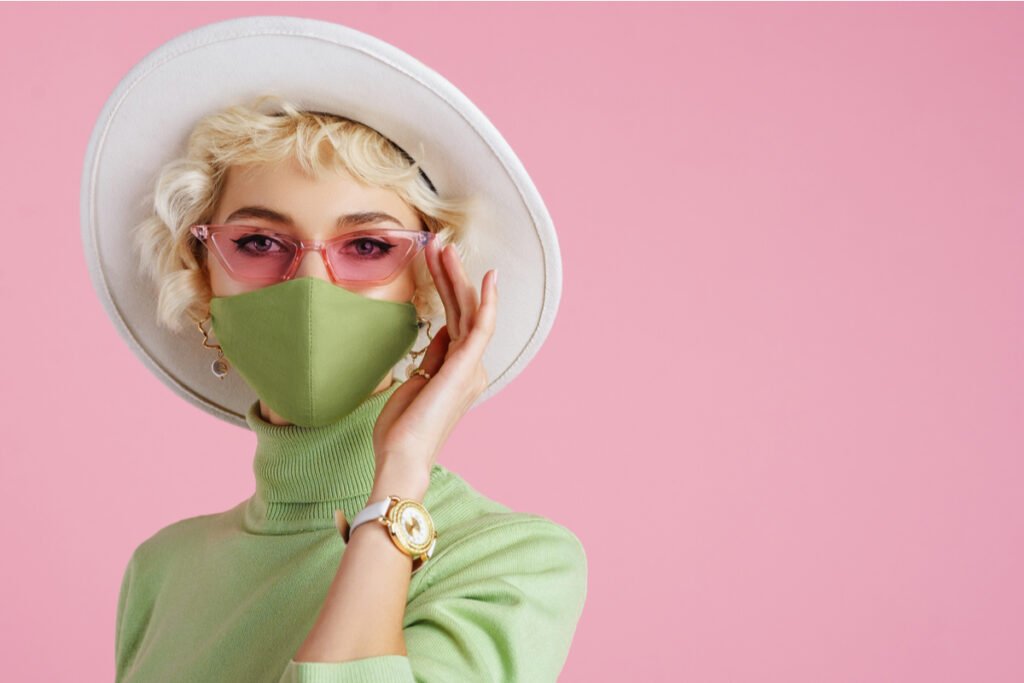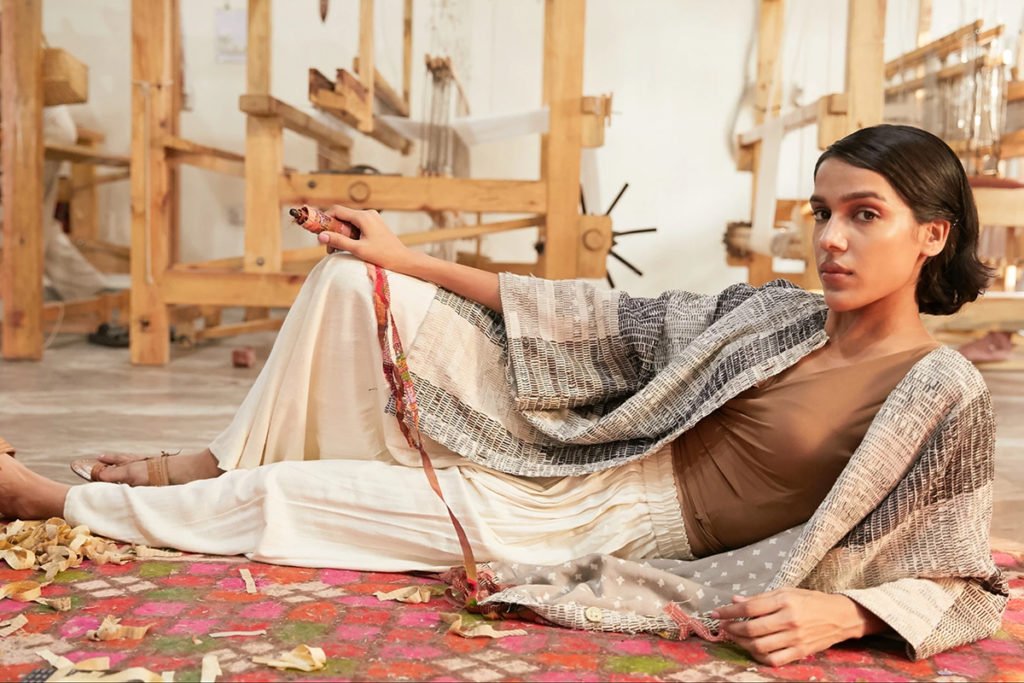Fat is a Scary Image Sold to Us
Fat isn’t an adjective but a personification. Fat is an image that assumes a scary identity in itself. And once an individual is labelled, that identity supersedes all others. From a very early age, we all are familiarised to looking at fat bodies as ‘ugly’. For people who have always known and felt their bodies as big, living in ‘ugliness’ has been what the world at large has made them believe, thus normalising a crippling inner battle with body image issues.
The way we see our bodies is not our own. Neither are the eyes with which we see them ours. The idea of our bodies being a certain way to make us believe we are ‘beautiful’ is manufactured in the throes of capitalistic world-making and sold to us to create more meaningless avenues of profit. Someone rightly said that the world benefits from inventing falsities in the form of flawed bodies and forms and succeeds when we buy them for the truth. And the absolute idea of ‘beauty’ is a box we are born right into.
From Barbies to Manequins
All those Barbies handed over to girls and all the Hulks and Batman and Superman figurines handed over to boys for child’s play plant the very seeds of body image ideals. Right from Betty(s) and Barbies to Victoria’s Secret models on the runway, girls idolize the anorexic female form, the ‘size zero’ body, a result of agonizing starvation and denial of culinary desires to be the most sexually glorified image to be achieved. In fact, research shows that cultures that had not priorly been exposed to western standards of beauty had not developed any form of obsession with thinning starved figures or the overwhelming need to be ‘slim’ and ‘petite’. Cultural domination of the West over other parts of the world has spilled the ‘slim and trim’ narrative into the psyche behind desirability.
Eating disorders like Bulimia or Anorexia nervosa are a plaguing problem in all societies today that are influenced by Western cultural norms. Eating disorders are psychological means of punishment the mind metes out to the body for indulging in the sheer act of ‘eating’. They might be characterised by binging incessantly followed by purging through gut-wrenching exercise, regurgitation or other trick forms; or include a complete disconnect from food with the body spasming and throwing up every time you take a bite. People suffering from eating disorders are mostly young, and primarily girls compared to boys though the latter suffer from such conditions as well. People have testified to having absurdly exaggerated and irrational fears of growing disproportionately fat by even consuming two spoonfuls. Starving off flesh into nonexistence becomes an obsessive need. Thin and uber thin bodies are an impossible fantasy pressured and stamped into the female psyche; toned and muscular structures for males. Lean bodies have been glamorised in pop art and culture right from boy bands like The Beatles to BTS. We live in a world where we walk, talk, judge and live labelled images. And in the process, we lose our own unique forms. We forget that marks on the body and unevenness of flesh make us look human and to live in a world where we can stay connected to fundamental selves, we need to embrace our human forms rather than fantasy shapes.

What is really ‘Fat’?
Now comes the question of what is ‘fat’ and how ‘thin’ does one need to be beautiful? While runway models need to erase flesh from bones perhaps till they live in feather-light skins, in several other cultures ‘curvaceous’ is the ultimate desirability quotient. However, the line crossing which ‘curves’ slip into ‘tyres’ and ‘sexy’ slips into ‘fat’ has been drawn very clumsily. You never know which label you are boxed into and when compliments turn into derision.
There are lots of arguments condemning ‘fat’ or even trying to define it – when your body mass index is a mismatch, out of proportion; when you are ‘unhealthy’; when there is ‘serious risk’ to your heart and other organs. But mostly you are fat when you start ‘looking’ fat. Fat perhaps isn’t any definition but an image, a scary one, one our eyes have been trained to hate. Without the slightest rationalisation or least bit of questioning. There are a lot of heavyweight medically sound reasons vehemently offered by people to decimate fat bodies from existence. ‘Fat’ shouldn’t exist. Because it is too ugly to look at. Under all reasons justifying why fat shouldn’t exist – because fat people are ‘too lazy’ to exercise or it ‘encourages’ people to stay ‘unhealthy’ – is a basic hatred towards the very image of Fat. There are no definitions for it. There is only one ‘look’, one face to the look and that face is scary for people.
Hating Plus Sized Bodies
And it is there where our battle against fat-shaming starts. To get rid of the hatred for how plus-sized bodies look. Not to question and argue and justify why and how ‘fat’ comes into being and why it must not be. Our battle starts with making people realise that the belief that ‘fat’ should not ‘exist’ stems from the hate towards the very sight of a ‘fat’ body. The first emotion upon registering fat bodies is repulsion. We all need to start looking first, with different eyes and try to register normalcy instead of hate. Only then can acceptance and beauty be recognised in all figures and all forms.
People Speak
We have asked few select people from various walks of lives, about how standard body sizes and representations of an ideal image have impacted them in their respective fields.
Anorexic bodies, size zeroes are almost an in-thing on the runway and anywhere in the fashion industry. What is your take on this fad of starving women in order to create images of ‘beauty’? What would you say about the psychological impact of the size zero obsession among the youth today?

To be honest, body discrimination has always existed in the fashion industry. Since I, myself, am a fashion stylist, there are so many choices now, and diversity is truly embraced. Clearly, people’s criticism isn’t levelled at natural beauty. It is pointed at the runway, fashion and magazine model whose look is presented as an aspirational standard of beauty. Frequently, these models are teenagers who are starved, all by themselves under the pressure and obsession of fame and perfection. They are also heavily photoshopped, professionally made up and presented as a standard of beauty. In terms of the fashion industry, the inconvenient truth is that the “fashion of the moment” (Haute Couture) of leading designers, utilizing tall and skinny models are easier to design for than the varied, real range of body type. So, when a woman who is naturally curvy, or a little normal, if I can say, the fashion industry says it’s her fault for having the wrong body, instead of acknowledging their own failure, or lack of competence in creating clothing for a range of realistic body types.
It’s a scam. It’s not about actual people being unrealistic; that would be a very silly argument to make. It’s about the fashion industry saying, there’s only one way to be beautiful and then tweaking that beauty until it’s literally unreal. It is also a fact that media can influence a person’s self-perception. It is the darker side of the impact it has caused on the youth today -constantly feeling the weight of societal pressure to be attractive and being bombarded with ridiculous imagery, thus leading to diseases that could potentially kill them. Always remember, fat isn’t necessarily unhealthy and skinny isn’t always healthy. Health includes our physical as well as mental wellbeing. Happiness and health are two sides of the same coin and go hand in hand. Your body is the only place that you completely own. You do need society to validate your existence or a scale to measure your worth. To me, beauty is simply about knowing and accepting who you are.
For people who are professional dancers, there is a common misconception that getting ‘fat’ affects how well you dance. Or that after years of dancing rigorously, when people leave regular practice, they tend to get fat. How wrong is this idea, and what do you have to offer to get rid of this?

Body shaming plus-size people or under-weight people is wrong by all means and the worst part is when someone says it was “just for fun”. How can shaming someone be just for fun? Judging someone’s talent by their physical appearance is worse! I took a break from dancing due to personal reasons, and then I had some health issues which reflected on my weight gain, and when I started dancing again, I was judged if I could dance. I was even questioned on my professional validity as a choreographer or dancer! People need to get something clear – weight or height or skin tone has absolutely nothing to do with talent and hard work. You can lose or gain weight anytime, but you can’t take back the words you say or undo the psychological effect it might have had on someone. Body shaming anyone by any means is wrong. Aren’t we all flawed in some way or the other? Just embrace it! Live and let live!
Plus-sized male actors are mostly used in roles of comic characters, caricatures or exaggerated goons or villains. Why is it that the ‘hero’ or male ‘protagonist’ who is supposed to take control of all things in the movie plot not have natural proportions? Does ‘fat’ contradict ‘masculinity’ according to industry standards? What is your take on this?

It’s not just the Indian movie industry. For any entertainment industry, in whatsoever part of the world, there is a fixed mentality which is stamped into our heads about lead roles and villans. Since the beginning, the lead roles are always made to be perfect looking. I feel this is because this judgement based on one’s body has been ever-present in the society, which is only what is reflected on screen. So an actor with not so ‘heroic’ a body only gets a chance for certain basic side roles which might be that of a goon or secondary villain. When you go meet a director or do an audition, looks determines what role he will be in consideration for and in which specific category. He is forced to stick to that particular character for a very long time, instead of being given a chance to try out a better lead even if he is capable of doing that. But there are some movies which support the story and choose lead characters who fit the story’s demands. Many directors and actors have that vision; some are trying to change this particular concept, and some have succeeded as well. We need a change, and I believe it will come.
Advertisements and media have normalized the idea of tall, slim women as the physical embodiment of success in the corporate setup. It is like confidence can be achieved only when you fit a certain body ideal or are ‘groomed’ accordingly. Have you experienced any such stigma in your own journey, and how did you overcome it?

The social stigma that we talk about starts at home. The body-shaming starts at home and then it spreads outside. It may not be intentional but when someone you love and respect highlights a certain aspect and criticises you (unintentionally or intentionally), it stays in your mind. And when someone who we love or who loves us mentions that, the mind naturally takes that specific element as a weakness or something that’s repulsive about ourselves. I am no different. I have absolutely faced this stigma! I have faced this in my personal and professional life. It was especially in the start because nobody recognized me for my talent because probably nobody knew about it. The first impression people get is the way I look – fat, obese. It took time and effort to show that I was as talented as any skinny person there and I had many other commendable skills (social skills, research skills, communication, etc.) that was more important for the job than looks. So professionally, the issue is mostly in the initial months when people don’t know anything about you. I have heard statements such as “she is brilliant in everything, if only she was thin, she would be perfect” being made about me. Things get normalized later on. Professionally, I overcame it by giving it time and sometimes by ignoring it. Personally, it still affects me to a large extent. Being fat or obese makes me want to overcompensate in other stuff to highlight that I have other things to be noticed about. Slim people are privileged when it comes to that.
We all know stories of the pressure on female celebrities to follow rigorous diet charts and schedules. Acting is supposed to be a natural art so why can’t an actor perform in her natural body? Why do you think roles are sculpted to fit women in certain shapes and body types only?

The question is very interesting, and it worries me very much. I am sorry that the situation is developing in such a way, that a lot of work is provided, so to speak, to “ideal” people. With regard to where I live and my work, here society is not ready to accept “ordinary” people, plus-size girls. Unfortunately, this leads to the rejection of ordinary people, and the desire to see and look at a beautiful picture. I was faced with the fact that many of my acquaintances are not ready to perceive themselves as a normal person. Why is that? Because there is a lot of self-doubt and fear of society and condemnation. This is just self-esteem. In my opinion, it is necessary to conduct marketing research what people want to see on the screen, in advertising and include honest and diverse views instead of straitjacketed ones.





